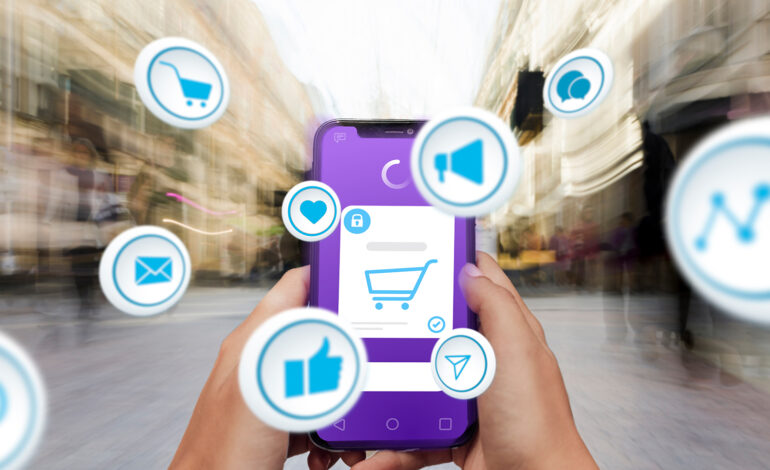Mobile Apps Lead Retail to New Heights in 2024

As the digital landscape continues to evolve, mobile apps are playing an increasingly pivotal role in reshaping how consumers shop, both online and in-store. According to recent data and forecasts, the trend of using mobile apps for shopping is set to surge, providing retailers with new avenues to engage customers and drive sales.
Mobile Shopping on the Rise: A Global Shift
Over half of adults worldwide have embraced mobile apps as a preferred purchase method. A 2023 survey conducted by Marigold in conjunction with E-consultancy revealed that 52% of adults have purchased a mobile app. In the U.S. alone, m-commerce sales, including those from retail apps, are projected to grow by 11.7%, reaching a staggering $542.66 billion this year. By 2028, mobile commerce is expected to account for over half of retail e-commerce sales.
The increasing reliance on mobile apps for shopping highlights the need for retailers to streamline the user experience. Ensuring seamless search and checkout processes will be key to maximizing engagement and conversion rates.
Shopping Preferences Vary by Category
While mobile apps have gained popularity across various retail categories, some sectors stand out more than others. A June 2023 survey from Integral Ad Science indicates that U.S. consumers are most likely to shop for apparel and accessories via mobile apps. Health, personal care, and beauty products also rank high on the list of categories preferred by mobile shoppers.
Not every retailer needs to prioritize mobile commerce. For brands offering products less commonly purchased through apps, focusing on entertainment and educational content can help maintain consumer engagement between purchases.
Loyalty Programs Drive Engagement
Loyalty programs and exclusive offers are among the most valuable features that retail apps can offer. According to a study by Scanbot in April 2023, 69.9% of consumers indicated that these features would prompt them to spend more, while 84.2% stated that they would enhance their loyalty to the retailer.
Retailers should pay attention to consumer preferences and tailor their mobile app features accordingly. Offering personalized experiences through loyalty programs can be a powerful tool in driving repeat business and fostering long-term customer relationships.
Mobile Apps Encourage Higher Spending
Despite the convenience and accessibility of mobile apps, the user experience plays a crucial role in determining their effectiveness. Over half of U.S. mobile shoppers (55%) noted that clutter on a page surrounding an ad negatively impacts their ability to focus on the ad, according to a June 2023 survey from Integral Ad Science.
A cluttered or poorly designed mobile app can detract from the shopping experience, reducing consumer engagement and diminishing the effectiveness of advertising. Retailers should prioritize clean, intuitive designs to maximize user satisfaction and boost spending.
The Mixed Effectiveness of Mobile Ads
While mobile ads can be a powerful tool for reaching consumers, their effectiveness can vary. Factors such as ad duration and loading time can significantly impact a consumer’s ability to engage with the content. Retailers must strike a balance between capturing attention and maintaining a user-friendly experience to ensure that their ads drive the desired outcomes.
To optimize the impact of mobile ads, retailers need to focus on delivering concise, well-timed messages that resonate with users without disrupting their shopping experience.
Embracing the Mobile Revolution
As competition for consumer dollars intensifies, mobile apps offer retailers a unique opportunity to connect with their audience on a more personal level. By focusing on seamless user experiences, leveraging loyalty programs, and optimizing ad placements, brands can harness the power of mobile apps to drive both physical and digital sales.









